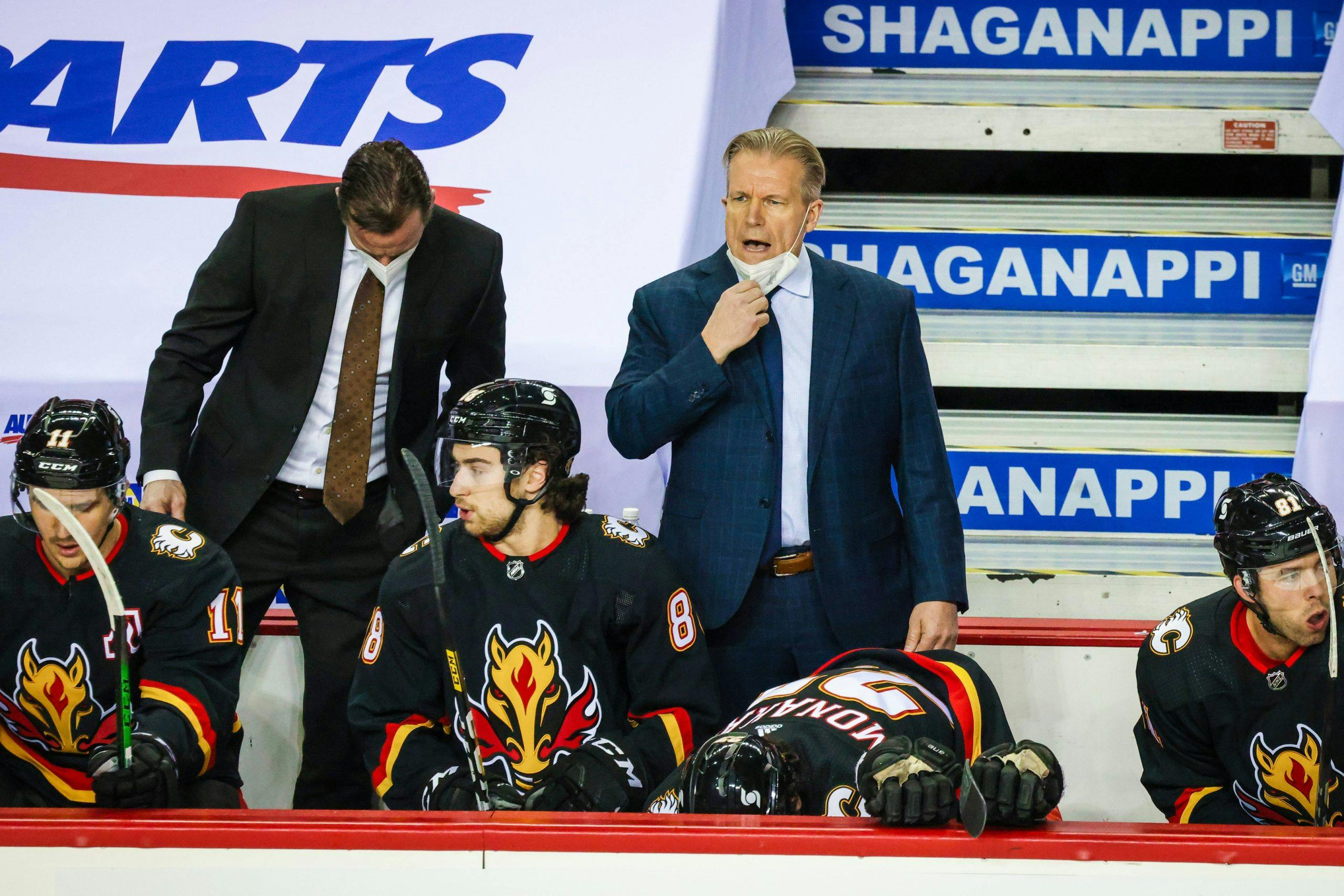Analyzing the Jekyll and Hyde road trip

By Ryan Pike
3 years agoThe Calgary Flames were back on the practice ice on Wednesday following a six game road trip that can be described as “mixed.” The club did as they have done this season, with performances varying from inspiring optimism to dispelling it entirely.
In other words: it was a Jekyll and Hyde trip very much in keeping with the team’s style in 2020-21.
The rundown
The Flames went 2-3-1 on the trip, capturing five of a possible 12 points. (Their opponents captured eight of a possible 12 points.)
Here’s a quick rundown of how things unfolded, with goal-scorers in brackets.
- Feb. 20: 7-1 loss to Edmonton [Mangiapane (PP)]
- Feb. 22: 3-0 win over Toronto [Bennett, Tkachuk (PP), Monahan (PP)]
- Feb. 24: 2-1 overtime loss to Toronto [Mangiapane]
- Feb. 25: 6-1 loss to Ottawa [Lucic]
- Feb. 27: 6-3 win over Ottawa [Valimaki, Backlund, Lindholm, Monahan (PP), Mangiapane (SH), Tkachuk]
- Mar. 1: 5-1 loss to Ottawa [Lucic (PP)]
Andrew Mangiapane led the team with three goals, but nobody had multiple even strength goals. David Rittich played in all six games, posting a .912 save percentage (.932 at even strength).
By strength
Overall, the Flames were out-scored 23-13 on the trip. Broken down by game situation, that looks like this:
- Even strength: out-scored 17-7
- Power play: out-scored opposition 5-0
- Penalty kill: out-scored 6-1
Mangiapane scored the team’s first shorthanded goal of the season. But even with the shortie – the goal, not Mangiapane – they were merely even overall at special teams with six goals for and six goals against.
They came up on the wrong side of two empty net situations. They allowed Toronto to score a late empty net goal to tie a game late, eventually losing in overtime to the Leafs. They also allowed Ottawa to score an empty net goal in their final game in Ottawa.
By situation
The team’s tendency to be either really good or really not good comes to the fore when looking at the team’s play in specific game situations.
- Leading: 31.6% of games (or 114:01)
- Tied: 29.1% of games (or 105:38)
- Trailing: 39.3% of games (or 142:24)
Most of the time on the trip the Flames spent leading is from two games: 56 minutes from their 6-1 win in Ottawa and 55 minutes from their 3-0 win in Toronto.
Most of the time the Flames spent trailing is from three games: 57 minutes from their 7-1 loss in Edmonton, 52 minutes from their 6-1 loss in Ottawa and 33 minutes from their 5-1 loss in Ottawa.
The Flames played three games during which they never trailed – their wins over Ottawa and Toronto and their overtime loss in Toronto – and three games where they never led – their three losses.
The club out-scored their opposition 7-4 when leading, but were out-scored by the opposition in the other two game situations: 4-3 when tied and a whopping 15-3 when trailing. The Flames’ flat play when down in games did likely lead to less quality scoring opportunities, but the percentages also went against them: they scored on 1.43% of their shots while trailing and got saves on 78.95% of opponent shots. (Both are considered giant variations from the norm.)
Sum it up
If you watched every game on the road trip and commented to yourself “hey, these guys are kind of all over the place”… well, they were, and they are. The numbers bear that out.
Sometimes they’re pretty good – the two games in Toronto and the afternoon game in Ottawa – and sometimes they’re pretty bad – the other three games – and the big challenge for them right now is there seems to be very little middle ground in terms of their overall performance. A mediocre team can be bailed out by hot goaltending or a standout performance from a scorer here or there, but when a team is below mediocre it’s difficult for any one aspect of their game to keep their collective heads above water.
Recent articles from Ryan Pike





